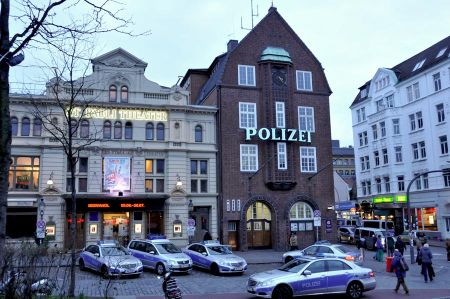Old St. Pauli-Elbtunnel and "Rote Flora" in Schanzenviertel
- Written by Portal Editor
Our visit to Bremen was coming to an end, two further appointments in Hamburg made the short trip to the nearby Hanseatic city necessary, which we were able to do quickly in the morning via the A1 motorway.
We went through the Elbe tunnel into the Hamburg Altona district, where we were able to park the vehicle directly at the Altona train station. Our passenger Laura had agreed to show us the Schanzenviertel, here in particular the autonomous cult or cultural center "Rote Flora" in the rest of the building of the former Flora Theater on the 71 shoulder blade.
Society and concert hall Flora
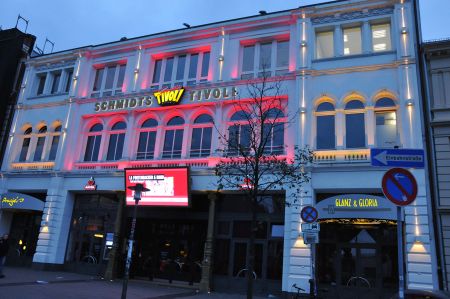 Since cities are always best explored on foot, we walk back to the Schanzenviertel, despite the possibility of using the S-Bahn. So we first went along Max-Brauer-Allee, through August-Lütgens-Park to Flora Park and Sternschanze, whose 26 buildings had been completely burned down around 1815 at the time of the French occupation to give the Napoleonic troops a better one to enable the Sternschanze to be defended. In 1835, a summer theater with an excursion garden opened on the Altona side of the Rückenblatt. It featured a simple uncovered wooden stage. Altona belonged to Denmark at the time, on the opposite side of the street began the area of the Rosenhof, the village of Eimsbüttel and the Hamburger Berg, which had been placed under Hamburg administration as the St. Pauli suburb from 1833. As was confirmed to us when we asked, it is actually called "the shoulder blade", which at that time was only considered a sparsely built-up country road in the direction of Pinneberg.
Since cities are always best explored on foot, we walk back to the Schanzenviertel, despite the possibility of using the S-Bahn. So we first went along Max-Brauer-Allee, through August-Lütgens-Park to Flora Park and Sternschanze, whose 26 buildings had been completely burned down around 1815 at the time of the French occupation to give the Napoleonic troops a better one to enable the Sternschanze to be defended. In 1835, a summer theater with an excursion garden opened on the Altona side of the Rückenblatt. It featured a simple uncovered wooden stage. Altona belonged to Denmark at the time, on the opposite side of the street began the area of the Rosenhof, the village of Eimsbüttel and the Hamburger Berg, which had been placed under Hamburg administration as the St. Pauli suburb from 1833. As was confirmed to us when we asked, it is actually called "the shoulder blade", which at that time was only considered a sparsely built-up country road in the direction of Pinneberg.
In 1855 the restaurateur H.F.P. Schmidt the site, had a new stage and an associated half-timbered rotunda built. In the garden there is a pond, various swings, animal cages and carousels for the children. The site was opened in 1859 as "Schmidt's Tivoli" and is said to have had 4,000 visitors for the occasion. The program on the stage offered farces, comedies and operas. Another change of ownership in 1869 brought with it the redesign and renaming to "Damm's Tivoli". Now "brilliant fireworks and Italian nights" were offered.
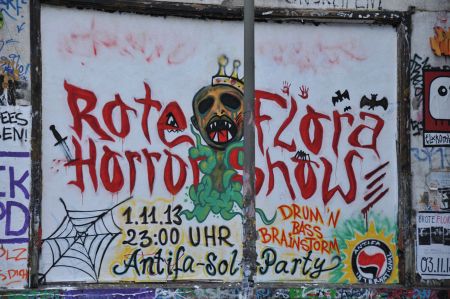 In 1888, after the demolition of the half-timbered round building, the merchants Theodor Mutzenbecher and Lerch built the "Society and Concert House Flora" in the place of the Tivoli, it was opened on June 2, 1889. A complex was created that consisted of social rooms, a concert hall, a Viennese café and a winter garden. On the first floor there were smaller halls for private companies, on the second floor there were rented apartments and under the roof there were rooms for the servants. The upscale public could stroll in the garden. The area stretched from the shoulder blade to the houses of today's Lippmannstrasse and Eifflerstrasse. In 1890, the ensemble was expanded to include a concert hall: in the garden behind the one- and two-storey houses on Juliusstrasse, the so-called “Crystallpalast” was built, a light Art Nouveau iron-frame construction with a wide, elevated central nave and two side aisles, glazed like a greenhouse.
In 1888, after the demolition of the half-timbered round building, the merchants Theodor Mutzenbecher and Lerch built the "Society and Concert House Flora" in the place of the Tivoli, it was opened on June 2, 1889. A complex was created that consisted of social rooms, a concert hall, a Viennese café and a winter garden. On the first floor there were smaller halls for private companies, on the second floor there were rented apartments and under the roof there were rooms for the servants. The upscale public could stroll in the garden. The area stretched from the shoulder blade to the houses of today's Lippmannstrasse and Eifflerstrasse. In 1890, the ensemble was expanded to include a concert hall: in the garden behind the one- and two-storey houses on Juliusstrasse, the so-called “Crystallpalast” was built, a light Art Nouveau iron-frame construction with a wide, elevated central nave and two side aisles, glazed like a greenhouse.
At the beginning of the century, the place of entertainment was given the so-called Flora March by the operetta composer Paul Lincke:
“Dora - come to the flora,
that has so many charms.
She lies on the shoulder blade,
is very close to you
the most beautiful variety show"
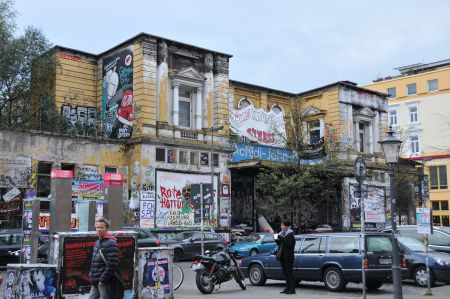 In 1987, the musical producer Friedrich Kurz became aware of the building. Kurz approached the city of Hamburg with the desire to convert the building into a musical theater. From 1989 he wanted to perform the musical "The Phantom of the Opera" there. Within a few months there was widespread resistance to the musical plans. An alliance of residents, tradespeople and autonomous groups organized a variety of protests. The concern was expressed that with a musical theater at this point, rents for commercial and residential space would increase.
In 1987, the musical producer Friedrich Kurz became aware of the building. Kurz approached the city of Hamburg with the desire to convert the building into a musical theater. From 1989 he wanted to perform the musical "The Phantom of the Opera" there. Within a few months there was widespread resistance to the musical plans. An alliance of residents, tradespeople and autonomous groups organized a variety of protests. The concern was expressed that with a musical theater at this point, rents for commercial and residential space would increase.
The demolition of most of the historic Floratheater in April 1988, especially the listed Crystallpalast from 1890, could not be prevented. Only the entrance area was to be preserved, behind it a new building with the new musical venue was to be built. But numerous actions, an occupation of the square in June 1988 and militant attacks against the construction site in September 1988 led to the investors giving up the musical project, at least at this point, despite daily police surveillance.
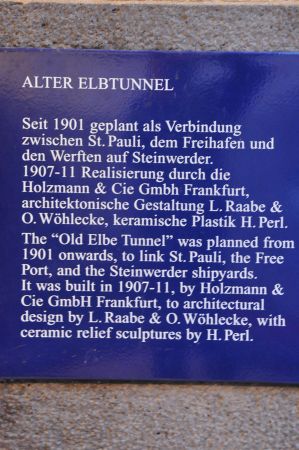 Until the summer of 1989, the rest of the building was empty. Only initiatives from the district tried to temporarily preserve the rest of the building in so-called winterproofing campaigns. In August 1989, the city surprisingly offered the initiatives a limited six-week usage contract in order to publicly present the idea of an alternative use as a district center. The groups initially responded to this integration offer.
Until the summer of 1989, the rest of the building was empty. Only initiatives from the district tried to temporarily preserve the rest of the building in so-called winterproofing campaigns. In August 1989, the city surprisingly offered the initiatives a limited six-week usage contract in order to publicly present the idea of an alternative use as a district center. The groups initially responded to this integration offer.
After the Rote Flora was officially opened on September 23, 1989, it was then declared occupied on November 1, 1989. Since then, the building has been used as a cultural and political meeting place. There are no paid positions, no funding, the project's concerns are organized within the framework of self-government. After a major fire in November 1995, the squatters did their own work to restore the Rote Flora, which continued to serve as a cultural district project and as a political center for autonomous groups in Hamburg. The Rote Flora is seen across Europe as a success story for an autonomous and anti-capitalist way of life in conscious resistance to the law. And to this day, if you look at the many international visitors to the Schanzenviertel in the cafes and restaurants, it can be seen as one of the city's real magnets, even if the future use of the Rote Flora is currently being hotly debated again.
After an invigorating cup of cocoa, we head along Budapester Straße in the direction of St. Pauli. Here a short photo stop at what is probably the most famous police station in the world, the Hamburg Davidswache, and the equally well-known Schmidts Tivoli Theater, we continue in the direction of the Elbe. We want to take a quick look at the old Elbe tunnel, when the Bosporus tunnel in Istanbul has just been opened to traffic. No, even though we walked right past the "Herbertstraße" access area, we didn't go inside. A few meters further we had arrived at the entrance building of the old Elbe tunnel.
The St. Pauli Elbe river Tunnel
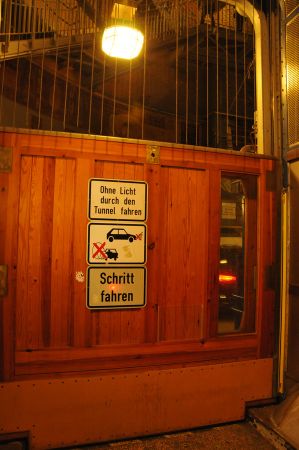 The St. Pauli-Elbtunnel, opened in 1911, crosses the Norderelbe over a length of 426.5 meters and connects the northern edge of the harbor at the St. Pauli-Landungsbrücken with the Elbe island of Steinwerder with two tunnel tubes. It is used as a public transport route by pedestrians and cyclists and, to a limited extent, by motor vehicles. It was considered a technical sensation when it opened in 1911, has been a listed building since 2003 and was awarded the title "Historical Landmark of Civil Engineering in Germany" by the Federal Chamber of Engineers and the Hamburg Chamber of Civil Engineers on September 7, 2011.
The St. Pauli-Elbtunnel, opened in 1911, crosses the Norderelbe over a length of 426.5 meters and connects the northern edge of the harbor at the St. Pauli-Landungsbrücken with the Elbe island of Steinwerder with two tunnel tubes. It is used as a public transport route by pedestrians and cyclists and, to a limited extent, by motor vehicles. It was considered a technical sensation when it opened in 1911, has been a listed building since 2003 and was awarded the title "Historical Landmark of Civil Engineering in Germany" by the Federal Chamber of Engineers and the Hamburg Chamber of Civil Engineers on September 7, 2011.
In order to get the increasing flow of traffic on the Elbe under control, a permanent technical solution for crossing the Elbe had been considered since the end of the 19th century. The background was the enormous growth of the port of Hamburg and the associated shifts to the opposite side of the Elbe from the city. It was hoped that this would result in less disruption to shipping from crossing harbor ferries and an improved connection to the large shipyards on Steinwerder, such as Blohm & Voss, AG Vulcan and the Reiherstieg shipyard, as well as the transhipment points of the newly created harbor basin in the area of the free port.
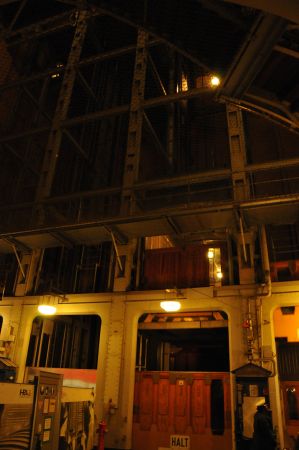 The HADAG ferry lines, which have existed since 1888, could not cope with the stream of workers that occurred at shift changes. A total of 20,000 shipyard workers and 25,000 port workers were employed in the port of Hamburg in 1895. In addition, many could not afford the ferries financially or operations were limited due to the weather, for example in winter with snow and ice.
The HADAG ferry lines, which have existed since 1888, could not cope with the stream of workers that occurred at shift changes. A total of 20,000 shipyard workers and 25,000 port workers were employed in the port of Hamburg in 1895. In addition, many could not afford the ferries financially or operations were limited due to the weather, for example in winter with snow and ice.
A decision was finally made in 1901, and building officer Ludwig Wendemuth designed an Elbe tunnel. The tube was designed with a width of 4.7 meters and a minimum height of also 4.7 meters for a middle lane with a width of 1.82 meters (which corresponded to the gauge of horse-drawn carriages at the time) and two elevated footpaths with a width of 1.44 meters both sides. In this way, pedestrian traffic could flow undisturbed in both directions; the single lane should have been used alternately.
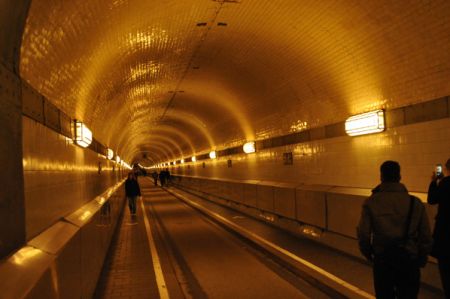 During construction, which began under the direction of Otto Stockhausen in 1907, compressed air was used to prevent the ingress of water by means of the overpressure generated. The two horizontal tunnel tubes were built using the shield tunneling method, and with a bottom depth of 24 meters they lead from the St. Pauli Landungsbrücken to Steinwerder on the southern bank of the North Elbe. The upper edge of the six meter high tubes is twelve meters below the mean high water level at that time. There was a three meter thick layer of silt between the tunnel tube and the river bed.
During construction, which began under the direction of Otto Stockhausen in 1907, compressed air was used to prevent the ingress of water by means of the overpressure generated. The two horizontal tunnel tubes were built using the shield tunneling method, and with a bottom depth of 24 meters they lead from the St. Pauli Landungsbrücken to Steinwerder on the southern bank of the North Elbe. The upper edge of the six meter high tubes is twelve meters below the mean high water level at that time. There was a three meter thick layer of silt between the tunnel tube and the river bed.
During construction under overpressure, three workers died from diving sickness and two more died in accidents. A total of about 4400 workers were employed. The plant caused construction costs of 10.7 million gold marks.
The tunnel was opened to pedestrian traffic on September 7, 1911 and to horse-drawn carriages and motor vehicles in November 1911. The press commented:
- "to speak loudly about how modern technology on land, on water and under water overcomes the tasks it faces" (Hamburger Fremdenblatt, May 21, 1911)
- "Its shape, not dissimilar to a mausoleum, is well suited to arouse brooding over its purpose in the viewer who has no idea of its purpose" (Deutsche Bauhütte, 1911)
- "as a contemporary thought flooded with the light and form-loving powers of modern contemporary taste, which is completely absorbed in the purpose, but in the realization of which nothing has been omitted that contributes to combining beauty with this purpose" (Hamburger Nachrichten, July 13 1911).
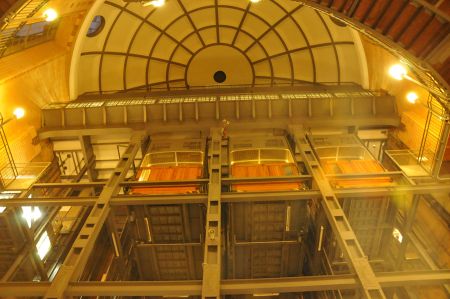 No access ramps were created for the tunnel. Instead, the vehicles are transported with elevators – four shafts on each side of the river, each with a car. The middle elevators each have a load capacity of ten tons (10,000 kilograms) and have a useful length of around 9.5 metres. They are longer than the two outer elevators of six tons each and a length of about 7.3 meters. Two buildings of the same dimensions were erected above the shafts according to plans by the Altona architects Raabe & Wöhlecke - on the St. Pauli side made of tuff stone, on the Steinwerder side made of bricks - with copper-clad cupolas. The drives for the elevator cars are also housed there. Small stoneware reliefs are inserted at regular intervals on the tiled walls of the tunnel tubes. The overlying Elbe is thematically represented on them. These include images of fish, crabs, mussels, but also rats and discarded objects.
No access ramps were created for the tunnel. Instead, the vehicles are transported with elevators – four shafts on each side of the river, each with a car. The middle elevators each have a load capacity of ten tons (10,000 kilograms) and have a useful length of around 9.5 metres. They are longer than the two outer elevators of six tons each and a length of about 7.3 meters. Two buildings of the same dimensions were erected above the shafts according to plans by the Altona architects Raabe & Wöhlecke - on the St. Pauli side made of tuff stone, on the Steinwerder side made of bricks - with copper-clad cupolas. The drives for the elevator cars are also housed there. Small stoneware reliefs are inserted at regular intervals on the tiled walls of the tunnel tubes. The overlying Elbe is thematically represented on them. These include images of fish, crabs, mussels, but also rats and discarded objects.
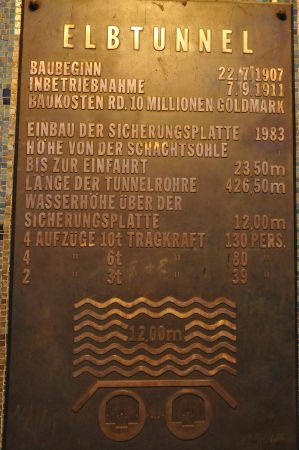 When the Elbe was deepened in 1981/82, the tunnel cover was reduced to one meter. During this work, parts of the tunnel were separated from the rest of the tunnel system by a reinforced concrete wall. A reinforced concrete structure was placed on top of the tunnel to protect against floating and damage, allowing the water depth to be increased to 10.6 meters in relation to the old SKN (mean spring low water).
When the Elbe was deepened in 1981/82, the tunnel cover was reduced to one meter. During this work, parts of the tunnel were separated from the rest of the tunnel system by a reinforced concrete wall. A reinforced concrete structure was placed on top of the tunnel to protect against floating and damage, allowing the water depth to be increased to 10.6 meters in relation to the old SKN (mean spring low water).
From October 5, 2009, a one-way road regulation similar to that of Sierichstraße was set up for car traffic. This means that from 5:30 a.m. to 1 p.m. there is one-way traffic from the St. Pauli Landungsbrücken to Steinwerder, and from 1 p.m. to 8 p.m. traffic flows back from the port to the city. During this period, cyclists have to adapt to the flow of traffic or push their bikes in the opposite direction. Due to the expansion of tourism and the growing range of leisure facilities in the southern port area, the numbers rose again. In 2008 around 300,000 motor vehicles, 63,000 cyclists and 700,000 pedestrians were counted.
Pedestrians and cyclists can still access the Old Elbe Tunnel free of charge and without time restrictions (with the exception of New Year's Eve from 9:00 p.m. to 4:00 a.m.), use by motor vehicles (motorized two-wheelers, cars, small trucks) is subject to a fee and at fixed opening times limited.
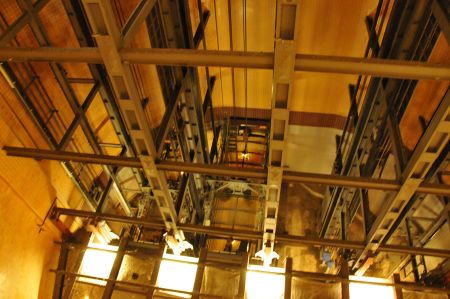 In 1906 there was a heated debate in the Hamburg Parliament about free use for pedestrians. The Social Democrats argued dialectically pointedly: "Because the bourgeoisie does not pay any taxes for the maintenance of the bridle paths on the Uhlenhorst, workers must be free to use the tunnel." The Elbe Tunnel was the only way to get to work in the port, along with the harbor ferries . Pedestrians can use it free of charge. When it opened in 1911, the underground crossing of the Elbe cost 50 pfennigs for cabs, passenger cars, empty trucks, horses and donkeys (equivalent to 2.70 euros today). Loaded trucks and company cars had to pay a weight-related fee (up to four tons: one mark / up to six tons: two marks / up to ten tons: four marks). Owners had to pay a fee of ten pfennigs for dogs they brought with them.
In 1906 there was a heated debate in the Hamburg Parliament about free use for pedestrians. The Social Democrats argued dialectically pointedly: "Because the bourgeoisie does not pay any taxes for the maintenance of the bridle paths on the Uhlenhorst, workers must be free to use the tunnel." The Elbe Tunnel was the only way to get to work in the port, along with the harbor ferries . Pedestrians can use it free of charge. When it opened in 1911, the underground crossing of the Elbe cost 50 pfennigs for cabs, passenger cars, empty trucks, horses and donkeys (equivalent to 2.70 euros today). Loaded trucks and company cars had to pay a weight-related fee (up to four tons: one mark / up to six tons: two marks / up to ten tons: four marks). Owners had to pay a fee of ten pfennigs for dogs they brought with them.
Since the large cruise ships have a draft of less than ten meters, they can use the Old Elbe Tunnel to reach the cruise terminal in the beach port, where the passenger halls of the Hamburg-America Line were located until the late 1930s. The large container ships cannot cross the tunnel due to their draft.
It's a strange feeling to enter the historic tunnel structure, even if there are certainly no security gaps. The interior of the elevators alone is absolutely worth seeing. We use one of the elevators down to the tunnel level, then crossed the tube that was open to traffic, which still has the traditional tiling on the walls, and climbed the stairs on the Elbe island of Steinwerder. The view of the Hamburg skyline was a dream despite or perhaps because of the onset of twilight. The many lights and the illuminated hustle and bustle on the Elbe let us linger for a moment before we went back through the tunnel to St. Pauli. A 100-year-old architectural masterpiece that is well worth a visit.
Please read as well:
Harbour tour on the Weser in Bremen
Harzer hiking needles - one system prevails!
https://www.alaturka.info/en/germany/hanseatic-hamburg/6025-old-st-pauli-elbtunnel-and-rote-flora-in-schanzenviertel#sigProIdb4beb7e482
